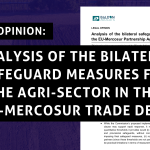The existing Modernisation Fund created under the EU Emissions Trading System (ETS) has the potential to be a real game-changer for lower-income EU Member States to achieve the just energy transition needed. It can help fill the investment gap to reach the EU 2030 targets. The opportunity window to make it fit-for-purpose is now: Members of the European Parliament are due to vote this Tuesday, May 17, on the position which will decide if the Fund will become bigger and free of fossil fuels and nuclear.
The Modernisation Fund was created under the ETS Directive to support lower-income Member States in their transition to climate neutrality by helping to modernise their energy systems and improve energy efficiency. Ten countries with 60% of the average EU GDP got extra funds that may amount to €40 billion by 2030 (assuming average price €65 per EUA for the period 2021-2030) parts of which were already disbursed in 2021.
The Modernisation Fund will be a crucial tool to advance on the just and green energy transition and narrow down the investment gap for 2030 targets. Its absorption is now limited as countries are focused on using resources from the Recovery and Resilience Facility (RRF) and programming of the EU Cohesion Funds, but its importance will grow over the coming years. If the opportunity to make it clean and effective is missed now, it can only be improved for the period after 2030. In the vote planned for May 17, Members of the European Parliament Environmental Committee will decide whether to make this fund a catalyst for the energy transition in the beneficiary Member States. Among those, Romania, the Czech Republic and Poland are the ones with the highest allocation. Romania can benefit from around €13 billion and has not even started spending their part. The Czech Republic can access over €12 billion, of which €0.32 billion (2.55%) was already allocated in 2021. Poland is the most active user of the Fund so far, and received permission to spend over 5% of its €7 billion worth allocation.
The Fund focuses on supporting renewable energy, energy efficiency, energy storage, energy networks, and just transition in carbon-dependent regions. This means funding redeployment, re-skilling, education, job-seeking initiatives for workers. Currently 70% of each Member State allocation needs to align with these goals, and corresponding projects are called ‘priority-investments’. This is an apt term since all these areas and sectors are very much in need of enhanced funding for the right kind of investments to deliver just energy transition and energy security. However, the current set-up also allows for the financing of fossil gas infrastructure as priority investment, if the investment is justified as contributing to the lay out of or upgrading to efficient district heating and highly efficient co-generation. Additionally, up to 30% of the allocation can still be used for so-called ‘non-priority investments’ which in turn allow for nuclear power generation or non-solid fossil fuels such as gas or shale oil.
There is a high chance this might change starting from 2024. As part of the current EU ETS Directive revision process, the European Parliament is currently discussing the Commission’ proposal submitted in June 2021, containing changes to the Fund. The Commission’s proposal is clear about the intention to strip it from all fossil fuels and nuclear. It also proposes an increase in the total allocation, and a decrease in the non-priority projects’ share from 30% to 20%. This is positive but insufficient: to be fully effective, 100% of the Fund’s resources should be dedicated to priority investments, which are designed to cover all key elements of ‘heavy changes’ needed for a proper transition, such as: an electricity network modernisation, energy efficiency measures across sectors or RES deployment. In fact, during the first year of the Fund operation only one ‘non-priority’ investment was submitted by the beneficiaries, versus twenty five of the priority investments. Allocating 100% of funds to this purpose will also guarantee a full exclusion of fossil gas and nuclear infrastructure from the Modernisation Fund. A strong coalition in the European Parliament is ready to amend the Commission’s proposal along these lines, but everything hangs on the final vote results.
The Modernisation Fund was set up by the European Union to support the efforts of low-income states, who often underline that they are lagging behind in the energy transition for historical (like Poland) or economic reasons (like Greece which can now become a new beneficiary). If spent on fossil fuels and nuclear power, this precious source will not only be wasted, but also keep fueling wars, conflicts, and the climate crisis. Moreover, it will cause huge economic damage to people, worsening the life standards of the most vulnerable ones. It is also important to mention that the Fund is created by revenues pooled from emission allowances of the ETS whose primary objective is to decarbonise the sectors it covers, notably the energy sector. Putting a price on carbon to then channel collected revenues towards activities emitting more carbon is not only a waste of previous resources but is also completely contradictory to the spirit of the ETS.
In terms of the size of the Fund, the Commission proposed adding another 2,5% of ETS revenues to existing allocation by creating a second edition of the Modernisation Fund, accessible to even more countries. The eligibility to access this stream of money will be based on 2016-2018 GDP results, which would effectively include Greece and Portugal as beneficiaries.
Members of the European Parliament have split views about this topic, some advocating for a more modest increase, coupled with redirecting part of those funds to top up the Innovation Fund instead. It is very likely that the upcoming vote will focus on deciding whether the Modernisation Fund is increased by 2% or 2,5% of ETS revenues are added to the Fund. If the Commission’s proposal goes through, which is the optimal scenario, an additional €40-60 bn could be provided (depending on ETS prices) to the countries which are most in need of funding for the energy transition.
However, there is a real risk of seeing positive proposals, such as those outlined above, not being adopted. This is due to at least two reasons: first, co-legislators are overwhelmingly focused on other issues pertaining to the EU ETS (such as increasing the ambition of the ETS, phasing out free allowances, or the prospects of an ETS2), and these are dominating both the debate in the Parliament and media headlines. Second, progressive amendments could be blocked due to the pro-fossil fuels and pro-nuclear attitudes of several Member States. As such, it is essential to make the reform of the Modernisation Fund more prominent in the public debate around the ETS system. Its strategic role and importance should be raised by the Members of the European Parliament and national decision-makers now, before the Parliament’s final vote – expected in June. Crucially, it should be acknowledged that these additional funds are essential for helping Central and Eastern European countries reach their 2030 climate targets.
Members of the European Parliament should support increasing the Fund’s resources, in line with the Commission’s proposal, exclude gas and nuclear and ensure that its resources are fully dedicated to finance priority investments. Both of these reforms are necessary for the Fund to realise its potential of transforming the energy systems of beneficiary Member States. In the meantime the responsibility lies with national decision makers. Member States who are already using the Modernisation Fund should focus on investments that are fully aligned with ambitious climate targets. Indeed, although there are still poor examples of Member States using this instrument to finance fossil gas projects, many positive projects have already been submitted to the Fund, such as PV and wind energy deployments, building insulation, power grid development, including the much-needed support for energy communities. These are precisely the types of investments that should be encouraged.



